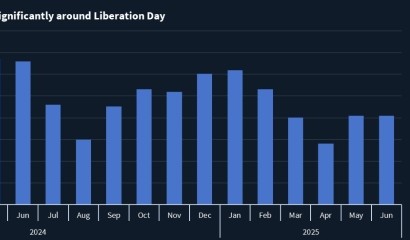Buyers’ market: CVC succeeds but Luz Saude’s flop shows valuation pain lingers
Some things are just written in the stars. The soaring aftermarket performance of CVC [AMS:CVC] seemed a sure thing given the two years of careful IPO preparation, growing investor appetite and its conservative pricing.
But, further afield, price discovery issues threaten to dampen what has been a smooth year for new listings.
CVC priced its upsized EUR 2.3bn IPO at EUR 14 a share, the midpoint of its EUR 13-EUR 15 range, giving it a market cap of EUR 14bn.
The final price meant investors poured into the book, given the hefty discount to its closest European peer EQT [STO:ETQ]. At the end of the first day of trading, CVC’s stock closed almost 17% above the offer price.
The cork-popping success of CVC’s listing was a boon for ECM. The deal was long awaited following postponements in 2022, due to Russia’s invasion of Ukraine, and late 2023, after the October 7 attacks in Israel and the subsequent outbreak of war in Gaza.
CVC’s success, along with heavy demand for the IPO of Spanish luxury conglomerate Puig, paints a rosy picture for European listings, but belies the fact that the post-Easter IPO window should have been busier, with three new listings pulled from the pipe.
Portuguese hospital operator Luz Saude, owned by Fidelidade-Companhia de Seguros, had its listing cancelled after two weeks of investor education, with three sources close to the deal highlighting the valuation gulf between seller expectations and investor indications.
Permira-owned Italian luxury sneaker owner Golden Goose, which had been gearing up for an IPO launch in the first few weeks of April, is now looking at a summer IPO, in hopes that valuation discrepancies with investors can be bridged by then.
Finally, Oaktree-backed Italian challenger bank Banca Progetto decided to explore a non-binding offer from Centerbridge, instead of an IPO, because investors were not willing to pay what the sponsor wanted for the asset.
One of the sources close to Luz Saude said that investors had been demanding as much as a 30% to 40% discount to Luz Saude’s listed peers. “The very minimum IPO discount you need at the moment is 25% and that is for the very best assets,” said the same source. “You need to let clients know that”.
“Investors are happy to take part in deals, but for a mid-cap asset you’re looking at around a 30% to 40% discount to peers.”
Fidelidade declined to comment for this story.
Listen up
While investors are happy to see deals like CVC getting done and trading well, last-minute postponement and delays are fostering a sense of frustration among buysiders.
“Investors are generally frustrated with some processes where they give good constructive feedback which is then ignored by either sellers or advisers,” said a banker close to the CVC IPO. “Investors really hate that and its counterintuitive because when you do listen to the market, like we tried to with CVC, everyone wins.”
An ECM investor commenting on the pulled Easter IPOs said that the valuation gap between indications and what sellers had been aiming for right up to IPO launch, or in the case of Luz Saude beyond it, was significant.
“On Luz Saude, they didn’t take the feedback at all, it seems, and they waited right until the end of investor education before finally deciding it wasn’t enough. It was the same with Golden Goose, there is a big gap between what was being pitched and what the market wants to pay,” the investor said.
The investor added that the CVC approach of selling a small stake at a lower price and watching the valuation grow was what the buyside wanted to see more of.
Several sources noted that if a high-quality company, like CVC, also coincidentally one of the most sophisticated sellers in the market given its experience of listing portfolio companies, was willing to sell at such a large discount to peers, then it showed most other sellers needed to follow suit.
Macro jitters
Luz Saude’s IPO postponement was attributed to “adverse market conditions” and two of the sources on the deal pointed to heightened tension between Israel and Iran as reasons for investor reticence towards the IPO.

Source: Dealogic IPO health index EMEA
The first source was unconvinced by that narrative, however, saying that conflict in the Middle East should not have been too much of a sentiment driver towards private Portuguese hospitals.
But markets are seeing some moves. The CBOE Vix index has risen by around 18% in the last month, although it still sits well below 20, the level that normally causes IPO concern.
But the increase in volatility has led to some retrenchment in the major US and European indices, with investors expressing concern over a spike in US Treasury yields, which might upend expectations on US rates and lead to equity market falls this year.
“It is true that the market and macro environment has deteriorated, it has not totally collapsed, but on the periphery, things are not as rosy as it was in the New Year,” said the first Luz Saude source. “In January, the talk was all about the next small-cap investing cycle and rates going down; that is definitely not the case anymore.”
The banker on CVC concurred on the difficulty of the IPO market despite markets being close to all-time highs and deals going well. He warned people about taking the wrong message from the success of CVC.
“That success now isn’t the whole story, which is that it is incredibly hard getting an IPO done and finding the engagement you need,” he noted, pointing to the sponsor’s previous aborted IPO attempts. “But if you do it well, you can be really efficient,” he added.
In IPOs as in life, money talks may be hard but they will likely pay off in the longer run.










